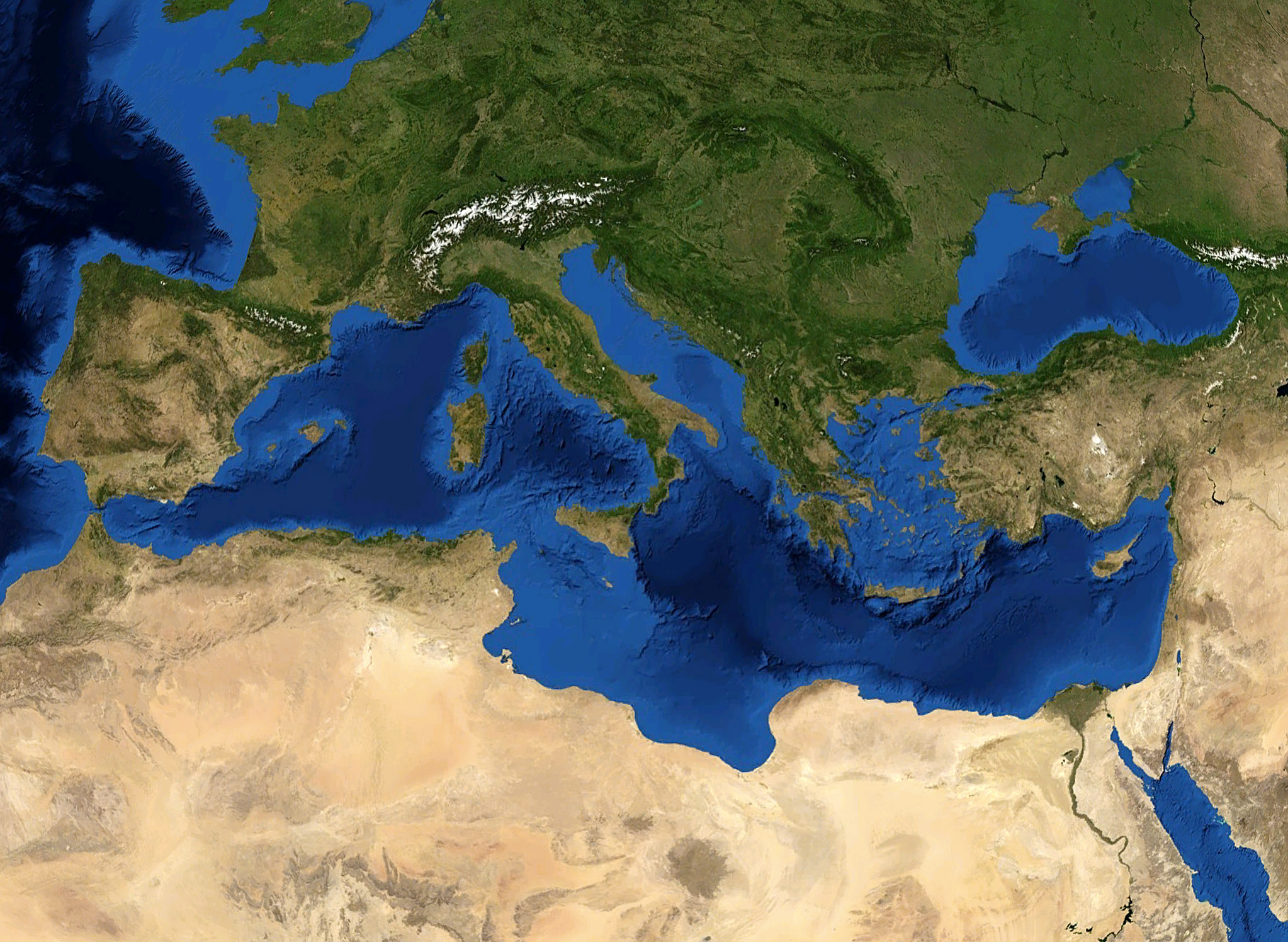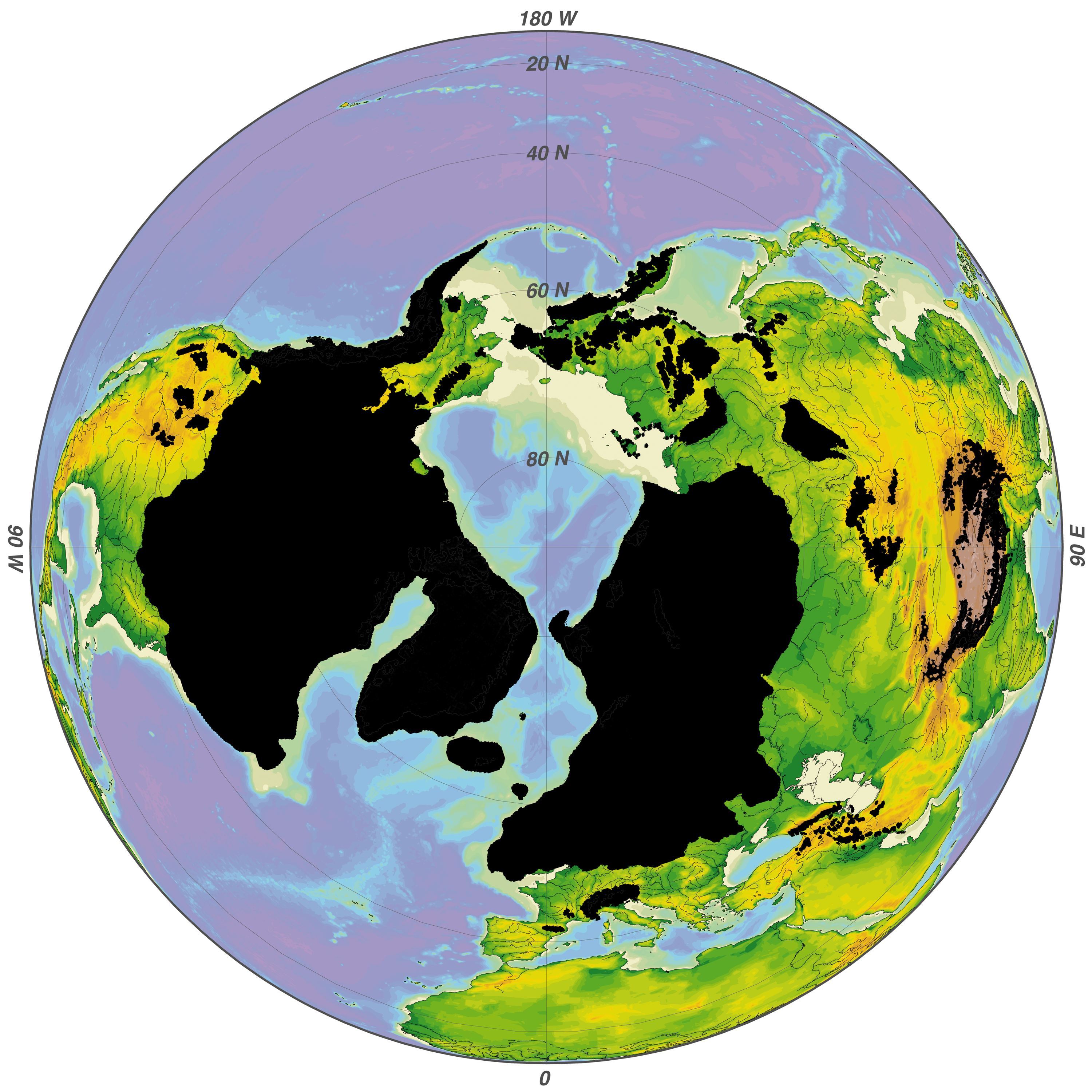|
Shebenik-Jabllanicë National Park
Shebenik National Park () is a List of national parks of Albania, national park in eastern Albania adjacent to the border with North Macedonia. It encompasses and is specifically marked by a mountainous landscape supplied with glacial lakes, valleys, dense coniferous and deciduous forests and Montane ecosystems, alpine meadows and pastures. Elevations in the park vary from 300 metres to over 2,200 metres Metres above the Adriatic, above the Adriatic at the peak of Shebenik and Jablanica Mountain, Jabllanica, hence the name. It dwells a number of endangered species that are fast becoming rare in Southern Europe, including the brown bear, gray wolf and Balkan lynx. The abundance in wildlife can in part be explained by the variety of vegetation types and remote location. The park offers some of the most rugged scenery in the eastern section of country that were carved into their present shapes by the glaciers of the Quaternary glaciation, last ice age. It is home to 14 glacial lakes, ... [...More Info...] [...Related Items...] OR: [Wikipedia] [Google] [Baidu] |
Elbasan County
Elbasan County () is one of the 12 counties of Albania. The population is 232,580 (as of 2023), in an area of 3199 km2. Its capital is the city Elbasan. Administrative divisions Until 2000, Elbasan County was subdivided into four districts: Elbasan District, Elbasan, Gramsh District, Gramsh, Librazhd District, Librazhd, and Peqin District, Peqin. Since the 2015 local government reform, the county consists of the following 7 municipalities: Belsh, Cërrik, Elbasan, Gramsh, Elbasan, Gramsh, Librazhd, Peqin and Prrenjas. Before 2015, it consisted of the following 50 municipalities: * Belsh * Bradashesh * Cërrik * Elbasan * Fierzë, Elbasan, Fierzë * Funarë * Gjergjan * Gjinar * Gjoçaj * Gostimë * Gracen * Gramsh, Elbasan, Gramsh * Grekan * Hotolisht * Kajan * Karinë * Klos, Elbasan, Klos * Kodovjat * Kukur * Kushovë * Labinot-Fushë * Labinot-Mal * Lenie, Albania, Lenie * Librazhd * Lunik, Albania, Lunik * Mollas, Elbasan, Mollas * Orenjë * Pajovë * Papër * Peqin * P ... [...More Info...] [...Related Items...] OR: [Wikipedia] [Google] [Baidu] |
Southern Europe
Southern Europe is also known as Mediterranean Europe, as its geography is marked by the Mediterranean Sea. Definitions of southern Europe include some or all of these countries and regions: Albania, Andorra, Bosnia and Herzegovina, Bulgaria, Croatia, Cyprus, Gibraltar, Greece, Italy, Kosovo, Malta, Monaco, Montenegro, North Macedonia, Portugal, San Marino, Serbia, Slovenia, southern France, Wallachia, southern Romania, Spain, Turkey, and Vatican City. Southern Europe is focused on the three peninsulas located in the extreme south of the European continent. These are the Iberian Peninsula, the Italian Peninsula, and the Balkans, Balkan Peninsula. These three peninsulas are separated from the rest of Europe by towering mountain ranges, respectively by the Pyrenees, the Alps and the Balkan Mountains. The location of these peninsulas in the heart of the Mediterranean Sea, as well as their mountainous reliefs, provide them with very different types of climates (mainly subtropics, ... [...More Info...] [...Related Items...] OR: [Wikipedia] [Google] [Baidu] |
Temperate Broadleaf And Mixed Forest
Temperate broadleaf and mixed forest is a temperate climate terrestrial habitat type defined by the World Wide Fund for Nature, with broadleaf tree ecoregions, and with conifer and broadleaf tree mixed coniferous forest ecoregions. These forests are richest and most distinctive in central China and eastern North America, with some other globally distinctive ecoregions in the Himalayas, Western and Central Europe, the southern coast of the Black Sea, Australasia, Southwestern South America and the Russian Far East. Ecology The typical structure of these forests includes four layers. * The uppermost layer is the canopy composed of tall mature trees ranging from high. Below the canopy is the three-layered, shade-tolerant understory that is roughly shorter than the canopy. * The top layer of the understory is the sub-canopy composed of smaller mature trees, saplings, and suppressed juvenile canopy layer trees awaiting an opening in the canopy. * Below the sub-canop ... [...More Info...] [...Related Items...] OR: [Wikipedia] [Google] [Baidu] |
Palearctic Realm
The Palearctic or Palaearctic is a biogeographic realm of the Earth, the largest of eight. Confined almost entirely to the Eastern Hemisphere, it stretches across Europe and Asia, north of the foothills of the Himalayas, and North Africa. The realm consists of several bioregions: the Mediterranean Basin; North Africa; North Arabia; Western, Central and East Asia. The Palaearctic realm also has numerous rivers and lakes, forming several freshwater ecoregions. Both the eastern and westernmost extremes of the Paleartic span into the Western Hemisphere, including Cape Dezhnyov in Chukotka Autonomous Okrug to the east and Iceland to the west. The term was first used in the 19th century, and is still in use as the basis for zoogeographic classification. History In an 1858 paper for the ''Proceedings of the Linnean Society'', British zoologist Philip Sclater first identified six terrestrial zoogeographic realms of the world: Palaearctic, Aethiopian/ Afrotropic, Indian/ Indom ... [...More Info...] [...Related Items...] OR: [Wikipedia] [Google] [Baidu] |
Ecoregion
An ecoregion (ecological region) is an ecological and geographic area that exists on multiple different levels, defined by type, quality, and quantity of environmental resources. Ecoregions cover relatively large areas of land or water, and contain characteristic, geographically distinct assemblages of natural communities and species. The biodiversity of flora, fauna and ecosystems that characterise an ecoregion tends to be distinct from that of other ecoregions. In theory, biodiversity or conservation ecoregions are relatively large areas of land or water where the probability of encountering different species and communities at any given point remains relatively constant, within an acceptable range of variation (largely undefined at this point). Ecoregions are also known as "ecozones" ("ecological zones"), although that term may also refer to biogeographic realms. Three caveats are appropriate for all bio-geographic mapping approaches. Firstly, no single bio-geographic fram ... [...More Info...] [...Related Items...] OR: [Wikipedia] [Google] [Baidu] |
Dinaric Mountains Mixed Forests
The Dinaric Mountains mixed forests are a terrestrial ecoregion of the temperate broadleaf and mixed forests biome in Southeastern Europe, according to both the WWF and Digital Map of European Ecological Regions by the European Environment Agency. It also is in the Palearctic realm. Geography The Dinaric Mountains mixed forests compose the montane forest region of the Dinaric Alps. This mountain range stretches along the eastern coast of the Adriatic Sea and occupy 58,200 km² (22,500 mi²) in Slovenia, Croatia, Bosnia and Herzegovina, Montenegro, Serbia, northeastern Kosovo, northern Albania, and northeastern Italy. With high precipitation ranges and an abundance of limestones, karst relief is prominent. Climate The climate of the ecoregion is wet and extremely humid. Precipitation ranges are generally above 1500 mm and ranges between 2000 and 3500 mm are common. Maximums measured in the hinterland of the Bay of Kotor surpass annual averages beyond 4500& ... [...More Info...] [...Related Items...] OR: [Wikipedia] [Google] [Baidu] |
Eurasian Lynx
The Eurasian lynx (''Lynx lynx'') is one of the four wikt:extant, extant species within the medium-sized wild Felidae, cat genus ''Lynx''. It is widely distributed from Northern Europe, Northern, Central Europe, Central and Eastern Europe to Central Asia and Siberia, the Tibetan Plateau and the Himalayas. It inhabits Temperate forest, temperate and boreal forests up to an elevation of . Despite its wide distribution, it is threatened by habitat loss and habitat fragmentation, fragmentation, poaching and depletion of prey. Taxonomy ''Felis lynx'' was the scientific name used in 1758 by Carl Linnaeus in his work ''Systema Naturae''. In the 19th and 20th centuries, the following Eurasian lynx subspecies were proposed: The following were also proposed, but are not considered Valid name (zoology), valid taxa: *Altai lynx (''L. l. wardi'') *Baikal lynx (''L. l. kozlovi'') *Amur lynx (''L. l. stroganovi'') *Sardinian lynx (''L. l. sardiniae'') Characteristics The Eurasian lyn ... [...More Info...] [...Related Items...] OR: [Wikipedia] [Google] [Baidu] |
Cirque Glacier
{{No footnotes, date=October 2024 A cirque glacier is formed in a cirque, a bowl-shaped depression on the side of or near mountains. Snow and ice accumulation in corries often occurs as the result of avalanching from higher surrounding slopes. If a cirque glacier advances far enough, it may become a valley glacier. Additionally, if a valley glacier retreats enough that it is within the cirque, it becomes a cirque glacier again. In these depressions, snow persists through summer months, and becomes glacier ice. Snow may be situated on the leeward slope of a mountain, where it is sheltered from wind. Rock fall from above slopes also plays an important role in sheltering the snow and ice from sunlight. If enough rock falls onto the glacier, it may become a rock glacier. Randklufts may form beneath corrie glaciers as open space between the ice and the bedrock, where meltwater Meltwater (or melt water) is water released by the melting of snow or ice, including glaciers, glacia ... [...More Info...] [...Related Items...] OR: [Wikipedia] [Google] [Baidu] |
Quaternary Glaciation
The Quaternary glaciation, also known as the Pleistocene glaciation, is an alternating series of glacial period, glacial and interglacial, interglacial periods during the Quaternary period that began 2.58 Year#SI prefix multipliers, Ma (million years ago) and is ongoing. Although geologists describe this entire period up to the present as an "ice age", in popular culture this term usually refers to the Last Glacial Period, most recent glacial period, or to the Pleistocene epoch in general. Since Earth still has polar Ice sheet, ice sheets, geologists consider the Quaternary glaciation to be ongoing, though currently in an interglacial period. During the Quaternary glaciation, ice sheets appeared, expanding during glacial periods and contracting during interglacial periods. Since the end of the last glacial period, only the Antarctic ice sheet, Antarctic and Greenland ice sheets have survived, while other sheets formed during glacial periods, such as the Laurentide Ice Sheet, hav ... [...More Info...] [...Related Items...] OR: [Wikipedia] [Google] [Baidu] |
Glacier
A glacier (; or ) is a persistent body of dense ice, a form of rock, that is constantly moving downhill under its own weight. A glacier forms where the accumulation of snow exceeds its ablation over many years, often centuries. It acquires distinguishing features, such as crevasses and seracs, as it slowly flows and deforms under stresses induced by its weight. As it moves, it abrades rock and debris from its substrate to create landforms such as cirques, moraines, or fjords. Although a glacier may flow into a body of water, it forms only on land“Glacier, N., Pronunciation.” Oxford English Dictionary, Oxford UP, June 2024, https://doi.org/10.1093/OED/7553486115. Accessed 25 Jan. 2025. and is distinct from the much thinner sea ice and lake ice that form on the surface of bodies of water. On Earth, 99% of glacial ice is contained within vast ice sheets (also known as "continental glaciers") in the polar regions, but glaciers may be found in mountain ranges on ever ... [...More Info...] [...Related Items...] OR: [Wikipedia] [Google] [Baidu] |
Vegetation Types
Vegetation classification is the process of classifying and mapping the vegetation over an area of the Earth's surface. Vegetation classification is often performed by state based agencies as part of land use, resource and environmental management. Many different methods of vegetation classification have been used. In general, there has been a shift from structural classification used by forestry for the mapping of timber resources, to floristic community mapping for biodiversity management. Whereas older forestry-based schemes considered factors such as height, species and density of the woody canopy, floristic community mapping shifts the emphasis onto ecological factors such as climate, soil type and floristic associations. Classification mapping is usually now done using geographic information systems (GIS) software. Classification schemes Following, some important classification schemes. Köppen (1884) Although this scheme is in fact of a climate classification, it has a ... [...More Info...] [...Related Items...] OR: [Wikipedia] [Google] [Baidu] |





